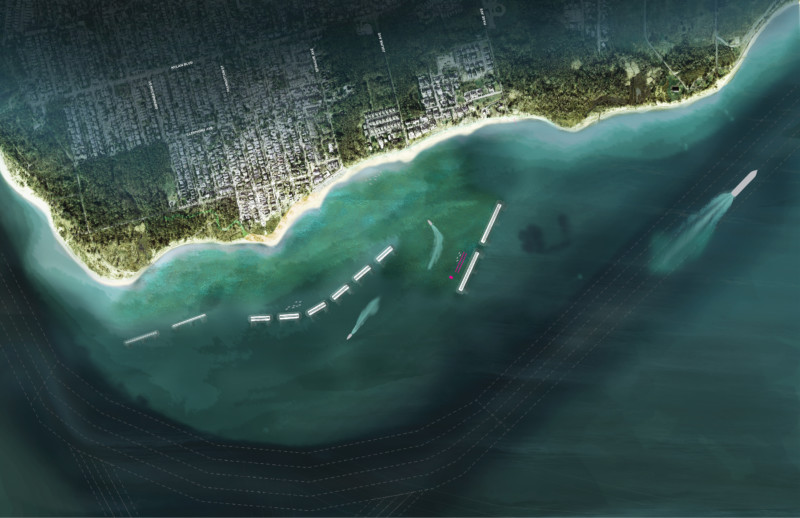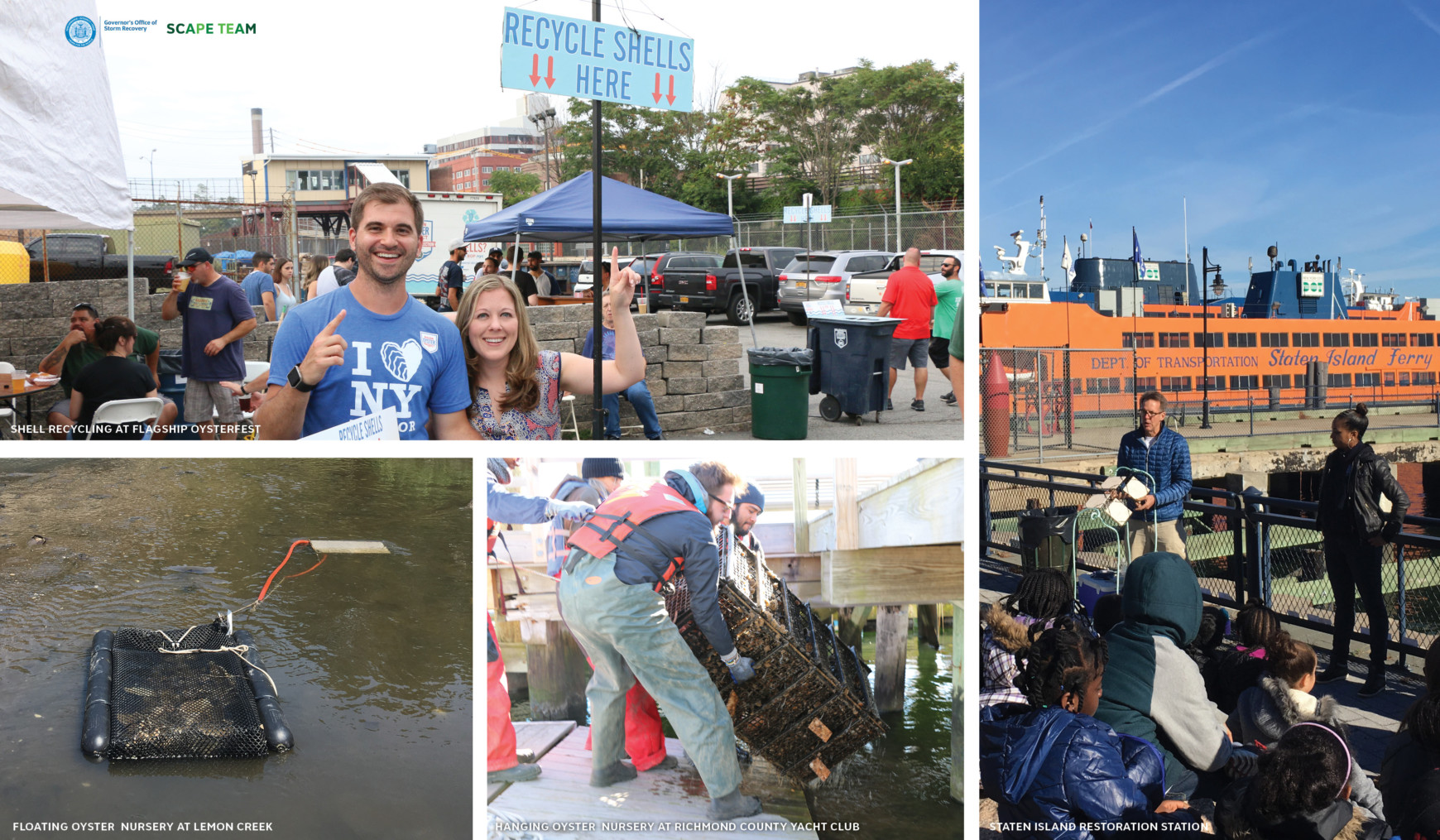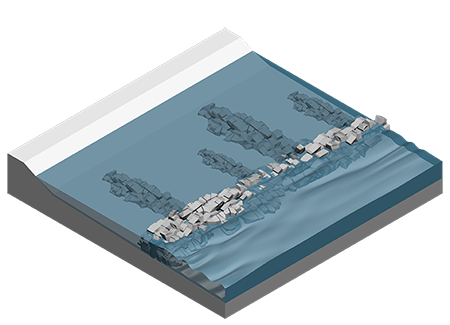


Using this knowledge on how reefs affect the hy-drodynamics, a reef restoration solution is designed and studied to ameliorate the coastal erosion and flooding. A comparison of wave energy modeling for past bathymetry indicates that degradation of the coral reefs better explains erosion than changes in climate and historical sea level rise. The analysis shows that, at present, the healthy and well-developed coral reefs system in the southern bay keeps the shoreline in equilibrium and stable, whereas reef degradation in the northern bay is linked with severe coastal erosion. Coastline changes in the bay over the past 6 decades are analyzed from bathymetry and benthic surveys, historical imagery, historical wave and sea level data and modeling of wave dynamics. This paper (i) analyzes the historical changes in the shoreline and the local marine, (ii) assess the role of coral reefs in shoreline positioning through a shoreline equilibrium model first applied to coral reef environments, and (iii) design and begin implementation of a reef-based solution to reduce erosion and flooding. Portions of the shoreline of Grenville Bay, Grenada, have seen acute shoreline erosion and coastal flooding. This paper presents a systematic approach to assess the protective role of coral reefs and to examine solutions based on the reef's influence on wave propagation patterns. Reefs are rarely assessed for their coastal protection service and thus not managed for their infrastructure benefits, while widespread damage and degradation continues. Evidences show coral reefs play a critical role in wave attenuation but relatively little direct connection has been drawn between these effects and impacts on shorelines. Articles copied from Draft Namespace on Wikipedia could be seen on the Draft Namespace of Wikipedia and not main one.Coastal communities in tropical environments are at increasing risk from both environmental degradation and climate change and require urgent local adaptation action. The list of its authors can be seen in its historical and/or the page Edithistory:Living Breakwaters Staten Island New York. “NY: Living Breakwaters.” Rebuild by Design, This article "Living Breakwaters Staten Island New York" is from Wikipedia.“Living Breakwaters: Design and Implementation.” SCAPE,.“Living Breakwaters.” Scenario Journal,, /strategy/living-breakwaters/.“New York's Big Climate Plan Really Does Include Oysters.”, Bloomberg, 2015, ↑ "Storm surge", Wikipedia,, retrieved.↑ "Environmental stewardship", Wikipedia,, retrieved.↑ "Biophilic design", Wikipedia,, retrieved.↑ "Green infrastructure", Wikipedia,, retrieved.

↑ "Hurricane Sandy", Wikipedia,, retrieved.Currently it is unclear what the coronavirus pandemic has done in concerns of completing this project on time. The projects funds also include an on-shore building that would facilitate community activity, educational programs and visiting groups. A $60 million federal grant was allocated for the project that began in 2017 and was scheduled to be finished late in 2020. This in turn will also minimize beach erosion, protecting the on-shore dunes being implemented for another project in the neighborhood. Third, and most closely related to hurricanes, the breakwater is intended to help mitigate storm surge and damage caused by waves in events like Sandy. Secondly this, biophilic design attempts to engage young people in marine science and promote environmental stewardship within the community. Oysters once flourished in this area, and their reintroduction in numbers should attract other fish species. First they are intended to clean up the water in the estuary that has been devastated by dredging. The implementation of oysters in this project holds several goals. The project is called a living breakwater, due to the oysters that will be growing on it. This piece of green infrastructure is being implemented by the Governors Office of Storm Recovery, along with the help of Stantec Engineering Firm, Billion Oyster Project, Harbor School and a community advisory council. The federally funded Rebuild by Design competition awarded Scape Landscape Architecture as one of the winning teams, to create a 13,000 foot living breakwater off the southern coast of Staten Island. In the wake of this storm, the town was searching for solutions that would allow them to fair better next time something of this proportion make landfall on the region. In 2012, the neighborhood of Tottenville, Staten Island, New York, suffered severe damages from Hurricane Sandy.


 0 kommentar(er)
0 kommentar(er)
